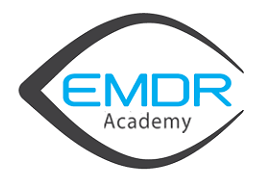EMDR therapy is conducted in the context of a therapeutic alliance between the EMDR practitioner and the client/patient. EMDR is an eight-phase protocol treatment developed to access the dysfunctional experiences or memories, stored in the mind/brain.
8 Phases of Treatment EMDR
Generally the amount of time the complete treatment will take depends upon the history I will take from you. From the history the EMDR treatment of the targets involves a three pronged protocol.
1- Your past memories,
2- The level of your present disturbance,
3- Your possible future actions),
All of which is required to help alleviate the symptoms and address the complete clinical presentation.
The goal of EMDR therapy is to process completely the experiences that are causing problems, and to include new ones that are needed for full health. "Processing" does not mean talking about it. "Processing" means setting up a learning state that will allow experiences that are causing problems to be "digested" and stored appropriately in your brain. That means that what is useful to you from an experience will be learned, and stored with appropriate emotions in your brain, and be able to guide you in positive ways in the future. The inappropriate emotions, beliefs, and body sensations will be discarded. Negative emotions, feelings and behaviours are generally caused by unresolved earlier experiences that are pushing you in the wrong directions.
The goal of EMDR therapy is to leave you with the emotions, understanding, and perspectives that will lead to healthy and useful behaviours and interactions.
Phase 1: History and Treatment Planning
This generally takes 1-2 sessions at the beginning of therapy, and can continue throughout the therapy, especially if new problems are revealed. In the first phase of EMDR treatment, the therapist takes a thorough history of the client and develops a treatment plan. This phase will include a discussion of the specific problem that has brought you into therapy, your behaviours stemming from that problem, and your symptoms. With this information, I will develop a treatment plan that defines the specific targets on which to use EMDR. These targets include the event(s) from the past that created the problem, the present situations that cause distress, and the key skills or behaviours the you need to learn for your future well-being. One of the unusual features of EMDR is that the person seeking treatment does not have to discuss any of his disturbing memories in detail. So while some individuals are comfortable, and even prefer, giving specifics, other people may present more of a general picture or outline. When the therapist asks, for example, "What event do you remember that made you feel worthless and useless?" the person may say, "It was something my brother did to me." That is all the information the therapist needs to identify and target the event with EMDR.
Phase 2: Preparation
For most clients this stage will take only 1-4 sessions. For others, with a very traumatized background, or with certain diagnoses, a longer time may be necessary. Basically, I will teach you some specific techniques so you can rapidly deal with any emotional disturbance that may arise. If you can do that, you are generally able to proceed to the next phase. One of the primary goals of the preparation phase is to establish a relationship of trust between the client and the therapist. While the person does not have to go into great detail about his disturbing memories, if the EMDR client does not trust his clinician, he may not accurately report what he feels and what changes he is (or isn't) experiencing during the eye movements. If he just wants to please the clinician and says he feels better when he doesn't, no therapy in the world will resolve his trauma. In any form of therapy it is best to look at the clinician as a facilitator, or guide, who needs to hear of any hurt, need, or disappointments in order to help achieve the common goal. EMDR is a great deal more than Bilateral Stimulation such as eye movements, and the clinician needs to know when to employ any of the needed procedures to keep the processing going.
During the Preparation Phase, the I will explain the theory of EMDR, how it is done, and what you can expect during and after treatment. Finally, I will teach you a variety of relaxation techniques for calming yourself in the face of any emotional disturbance that may arise during or after a session. Learning these tools is an important aid for anyone. The happiest people on the planet have ways of relaxing themselves and decompressing from life's inevitable, and often unsuspected, stress. One goal of EMDR therapy is to make sure that the client can take care of himself.
Phase 3: Assessment
This phase is used to access each target memory in a controlled and standardised way so it can be effectively processed. Processing does not mean talking about it. (See the Reprocessing sections below). I will help you identify the aspects of the target memory to be processed. The first step is for you to select a specific picture or scene from the target event (which was identified during Phase One) that best represents the memory. Then you will choose a statement that expresses a negative self-belief you have associated with the event. Even if you intellectually know that the statement is false, it is important that you focus on it. These negative beliefs are actually verbalizations of the disturbing emotions that still exist within in you. Common negative cognitions (thoughts) include statements such as "I am helpless," " I am worthless," " I am unlovable," " I am dirty," " I am bad," etc. You will be asked to identify a positive self-statement that you would rather believe. This statement should incorporate an internal sense of control such as "I am worthwhile/ lovable/ a good person/ in control" or "I can succeed." Sometimes, when the primary emotion is fear, such as in the aftermath of a natural disaster, the negative cognition can be, "I am in danger" and the positive cognition can be, "I am safe now." "I am in danger" can be considered a negative cognition, because the fear is inappropriate -- it is locked in the nervous system, but the danger is actually past. The positive cognition should reflect what is actually appropriate in the present. At this point, the I will ask you to estimate how true you feel his positive belief is using the 1-to-7 Validity of Cognition (VOC) scale. "1" equals "completely false," and " 7" equals "completely true." It is important to give a score that reflects how you "feel," not " what you think." We may logically " know" that something is wrong, but we are almost always driven by how it " feels" to us.
Also, during the Assessment Phase, you will identify the negative emotions you are feeling such as (fear, anger) and then the physical sensations that resonates in your body (tightness in the stomach, cold hands) associated with the target memory. I will ask you to rate the level of disturbance you feel using the 0 (no disturbance)-to-10 (the worst feeling you? ve ever had) This is what we call the Subjective Units of Disturbance (SUD) scale. The Reprocessing for a single trauma is generally accomplished within 3 sessions. If it takes longer, you should see some improvement within that amount of time.
Phases 1 through to 3 lay the groundwork for the comprehensive treatment and reprocessing of the specific targeted events. Although the Bilateral Stimulation through eye movements (or taps, or tones) are used during the following three phases, they are only one component of a complex therapy. The use of the step-by-step eight-phase approach allows the experienced, trained EMDR clinician to maximize the treatment effects for the you in a logical and standardised fashion. It also allows both the client and the clinician to monitor the progress during every treatment session.
Phase 4: Desensitization
This phase focuses on your disturbing emotions and sensations as they are measured by the SUDs rating and deals with your responses (including other memories, insights and associations that may arise) as the targeted memory event changes and its disturbing elements are resolved. This phase gives the opportunity to identify and resolve similar events that may have occurred and are associated with the target (Clustering). That way, you can actually surpass your initial goals and heal beyond your expectations. During desensitization, I will lead you in sets of eye movement (or other forms of stimulation) with appropriate shifts and changes of focus until his SUD-scale levels are reduced to zero (or 1 or 2 if this is more appropriate). Starting with the main target, the different associations to the memory are followed. For instance, a person may start with a horrific event and soon have other associations to it. I will guide you to a complete resolution of the target. SUD level 0 or 1.
Phase 5: Installation
The goal is to concentrate on and increase the strength of the positive belief that you have identified to replace you original negative belief. For example, you might begin with a mental image of being beaten up by your father and have a negative belief of "I am powerless." During the Desensitisation Phase you will have reprocessed the terror of that childhood event and fully realised that as an adult you now have strength and choices you didn't have when you were young. During this fifth phase of treatment, the positive cognition, "I am now in control," will be strengthened and installed.
How deeply the person believes his positive cognition is then measured using the Validity of Cognition (VOC) scale. The goal is for the person to accept the full truth of his positive self-statement at a level of 7 (completely true).
Fortunately, just as EMDR cannot make anyone shed appropriate negative feelings, it cannot make the person believe anything positive that is not appropriate either. So if the person is aware that he actually needs to learn some new skill, such as self-defense training, in order to be truly in control of the situation, the validity of his positive belief will rise only to the corresponding level, such as a 5 or 6 on the VOC scale.
Phase 6: Body scan
After the positive cognition has been strengthened and installed, I will ask you to bring the original target event to mind and see if you notice any residual tension/disturbance in your body. If so, these physical sensations are then targeted for reprocessing by focusing on them while engaging in Bilateral stimulation.
Evaluations of thousands of EMDR sessions indicate that there is a physical response to unresolved thoughts. This finding has been supported by independent studies of memory indicating that when a person is negatively affected by trauma, information about the traumatic event is stored in motoric (or body systems) memory, rather than narrative memory, and retains the negative emotions and physical sensations of the original event. When that information is processed, however, it can then move to narrative (or verbalizable) memory and the body sensations and negative feelings associated with it disappear. Therefore, an EMDR session is not considered successful until the client can bring up the original target without feeling any body tension. Positive self-beliefs are important, but they have to be believed on more than just an intellectual level.
Phase 7: Closure
This ends every treatment session- The Closure ensures that you leave at the end of each session feeling better than at the beginning. If the processing of the traumatic target event is not complete in a single session, I will assist you in using a variety of self-calming techniques in order to regain a sense of equilibrium. Throughout the EMDR session, it is important to note that you have been in control (for instance, when I instructed that it is okay to raise your hand in the "stop" gesture at anytime) and it is important that you continue to feel in control after the sessions has ended. I will brief you on what to expect between sessions (some processing may continue, some new material may arise), how to use a journal to record these experiences, and which techniques you might use on your own to help you feel more calm.
Phase 8: Re-evaluation
I will start the following subsequent sessions, and check to make sure that the positive results (low SUDs, high VOC, no body tension) have been maintained, identify any new areas that need treatment, and continue to reprocess the additional targets.
The Re-evaluation Phase helps me to be guided through the treatment plans that are needed in order to deal with your problems. As with any form of good therapy, the Re-evaluation Phase is vital in order to determine the success of the treatment over time. Although you may feel relief almost immediately with EMDR, it is as important to complete the eight phases of treatment, as it is to complete an entire course of treatment with antibiotics.
Past, Present and Future
Although EMDR may produce results more rapidly than previous forms of therapy, speed is not the issue and it is important to remember that every client has different needs. For instance, one client may take weeks to establish sufficient feelings of trust (Phase Two), while another may proceed quickly through the first six phases of treatment only to reveal, then, something even more important that needs treatment. Also, treatment is not complete until EMDR therapy has focused on the past memories that are contributing to the problem, the present situations that are disturbing, and what skills the client may need for the future.


